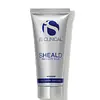What's inside
What's inside
 Key Ingredients
Key Ingredients

 Benefits
Benefits

 Concerns
Concerns

 Ingredients Side-by-side
Ingredients Side-by-side

Water
Skin ConditioningAlcohol Denat.
AntimicrobialButylene Glycol
HumectantSodium Hyaluronate
HumectantGlycerin
HumectantAloe Barbadensis Leaf Juice
Skin ConditioningPolysorbate 20
EmulsifyingTriethanolamine
BufferingPichia/Resveratrol Ferment Extract
Skin ConditioningCamellia Sinensis Leaf Extract
AntimicrobialGlycyrrhiza Glabra Root Extract
BleachingRosmarinus Officinalis Leaf Extract
AntimicrobialVitis Vinifera Seed Extract
AntimicrobialMalachite Extract
AntioxidantPhenoxyethanol
PreservativeAsiaticoside
AntioxidantAsiatic Acid
Skin ConditioningMadecassic Acid
Skin ConditioningCarbomer
Emulsion StabilisingCaprylyl Glycol
EmollientEthylhexylglycerin
Skin ConditioningHexylene Glycol
EmulsifyingMenthol
MaskingWater, Alcohol Denat., Butylene Glycol, Sodium Hyaluronate, Glycerin, Aloe Barbadensis Leaf Juice, Polysorbate 20, Triethanolamine, Pichia/Resveratrol Ferment Extract, Camellia Sinensis Leaf Extract, Glycyrrhiza Glabra Root Extract, Rosmarinus Officinalis Leaf Extract, Vitis Vinifera Seed Extract, Malachite Extract, Phenoxyethanol, Asiaticoside, Asiatic Acid, Madecassic Acid, Carbomer, Caprylyl Glycol, Ethylhexylglycerin, Hexylene Glycol, Menthol
Water
Skin ConditioningSodium Hyaluronate
HumectantGlycerin
HumectantC12-15 Pareth-3 Benzoate
AntimicrobialPetrolatum
EmollientTocopherol
AntioxidantBeta-Glucan
Skin ConditioningCetearyl Alcohol
EmollientCeteareth-20
CleansingGlyceryl Stearate
EmollientPEG-100 Stearate
Piper Methysticum Leaf/Root/Stem Extract
Skin ConditioningAhnfeltia Concinna Extract
Skin ConditioningSorbitan Stearate
EmulsifyingPEG-8
HumectantPEG-8/Smdi Copolymer
Zea Mays Kernel Extract
Panthenol
Skin ConditioningCeramide NP
Skin ConditioningSodium Lauroyl Lactylate
EmulsifyingButylene Glycol
HumectantPolysorbate 20
EmulsifyingXanthan Gum
EmulsifyingCarbomer
Emulsion StabilisingRetinyl Palmitate
Skin ConditioningTriethanolamine
BufferingCeramide AP
Skin ConditioningCeramide EOP
Skin ConditioningCaprylyl Glycol
EmollientCholesterol
EmollientPhytosphingosine
Skin ConditioningAvena Sativa Kernel Extract
Abrasive1,2-Hexanediol
Skin ConditioningDisodium EDTA
Water, Sodium Hyaluronate, Glycerin, C12-15 Pareth-3 Benzoate, Petrolatum, Tocopherol, Beta-Glucan, Cetearyl Alcohol, Ceteareth-20, Glyceryl Stearate, PEG-100 Stearate, Piper Methysticum Leaf/Root/Stem Extract, Ahnfeltia Concinna Extract, Sorbitan Stearate, PEG-8, PEG-8/Smdi Copolymer, Zea Mays Kernel Extract, Panthenol, Ceramide NP, Sodium Lauroyl Lactylate, Butylene Glycol, Polysorbate 20, Xanthan Gum, Carbomer, Retinyl Palmitate, Triethanolamine, Ceramide AP, Ceramide EOP, Caprylyl Glycol, Cholesterol, Phytosphingosine, Avena Sativa Kernel Extract, 1,2-Hexanediol, Disodium EDTA
 Reviews
Reviews

Ingredients Explained
These ingredients are found in both products.
Ingredients higher up in an ingredient list are typically present in a larger amount.
Butylene Glycol (or BG) is used within cosmetic products for a few different reasons:
Overall, Butylene Glycol is a safe and well-rounded ingredient that works well with other ingredients.
Though this ingredient works well with most skin types, some people with sensitive skin may experience a reaction such as allergic rashes, closed comedones, or itchiness.
Learn more about Butylene GlycolCaprylyl Glycol is a humectant and emollient, meaning it attracts and preserves moisture.
It is a common ingredient in many products, especially those designed to hydrate skin. The primary benefits are retaining moisture, skin softening, and promoting a healthy skin barrier.
Though Caprylyl Glycol is an alcohol derived from fatty acids, it is not the kind that can dry out skin.
This ingredient is also used as a preservative to extend the life of products. It has slight antimicrobial properties.
Learn more about Caprylyl GlycolCarbomer is a polymer of acrylic acid. Its main role is to create a gel consistency.
A high amount of carbomer can cause pilling or balling up of products. Don't worry, most products contain 1% or less of carbomer.
Glycerin is already naturally found in your skin. It helps moisturize and protect your skin.
A study from 2016 found glycerin to be more effective as a humectant than AHAs and hyaluronic acid.
As a humectant, it helps the skin stay hydrated by pulling moisture to your skin. The low molecular weight of glycerin allows it to pull moisture into the deeper layers of your skin.
Hydrated skin improves your skin barrier; Your skin barrier helps protect against irritants and bacteria.
Glycerin has also been found to have antimicrobial and antiviral properties. Due to these properties, glycerin is often used in wound and burn treatments.
In cosmetics, glycerin is usually derived from plants such as soybean or palm. However, it can also be sourced from animals, such as tallow or animal fat.
This ingredient is organic, colorless, odorless, and non-toxic.
Glycerin is the name for this ingredient in American English. British English uses Glycerol/Glycerine.
Learn more about GlycerinPolysorbate 20 is made by combining ethoxylation of sorbitan, ethylene oxide, and lauric acid. It is a mild cleansing agent, surfactant, and emulsifier.
As a surfactant, it helps collect dirt and oils for washing. Emulsifiers prevent oils and water from separating.
Polysorbate 20 also adds scent to a product. Since it is made using sorbitol, it has a sweet scent. Sorbitol can also be found in fruits such as apples and peaches.
The lauric acid used to create Polysorbate 20 is often derived from coconuts.
Polysorbate 20 may not be fungal acne safe.
Learn more about Polysorbate 20Sodium Hyaluronate is hyaluronic acid's salt form. It is commonly derived from the sodium salt of hyaluronic acid.
Like hyaluronic acid, it is great at holding water and acts as a humectant. This makes it a great skin hydrating ingredient.
Sodium Hyaluronate is naturally occurring in our bodies and is mostly found in eye fluid and joints.
These are some other common types of Hyaluronic Acid:
Learn more about Sodium HyaluronateTriethanolamine is an emulsifier and pH adjuster. It is created using ethylene oxide and ammonia. This gives Triethanolamine a nitrogen core and a similar scent to ammonia.
As an emulsifier, it prevents ingredients from separating and enhances texture by adding volume to a product.
PH adjusters are common in cosmetic products. The pH of a product can affect the effectiveness of other ingredients. A product with a high pH may also irritate the skin.
Learn more about TriethanolamineWater. It's the most common cosmetic ingredient of all. You'll usually see it at the top of ingredient lists, meaning that it makes up the largest part of the product.
So why is it so popular? Water most often acts as a solvent - this means that it helps dissolve other ingredients into the formulation.
You'll also recognize water as that liquid we all need to stay alive. If you see this, drink a glass of water. Stay hydrated!
Learn more about Water